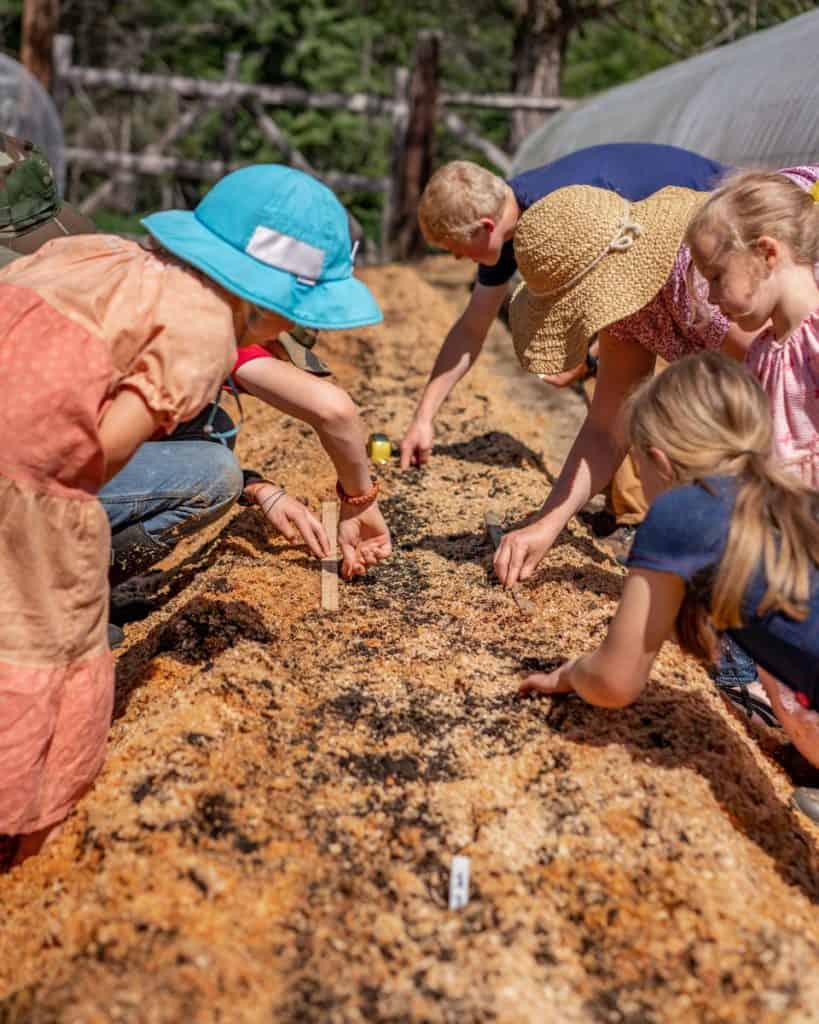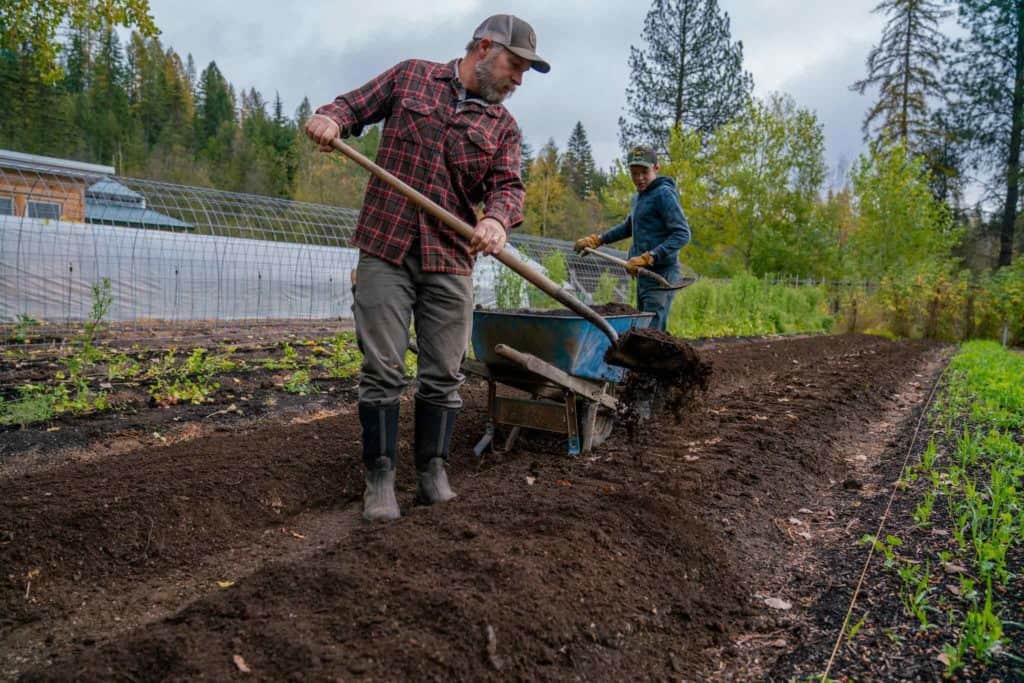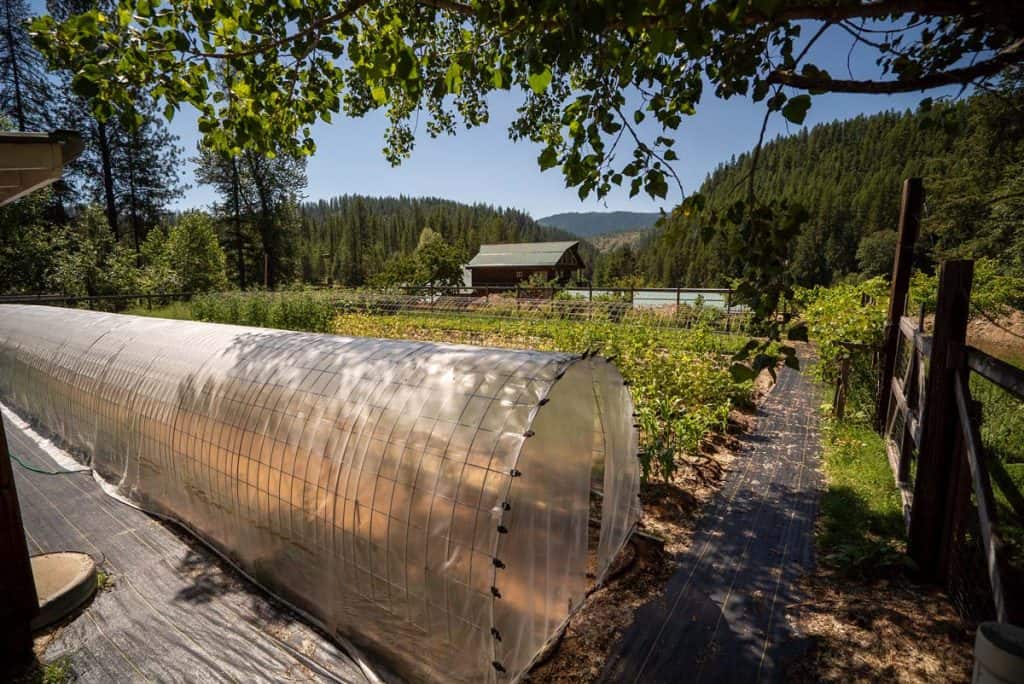Many of us come to homesteading because of a health crisis or a health concern. At some point, it becomes clear that homesteading lends skillsets that are beneficial to our overall health. In this post, we’re discussing specific aspects of homesteading that can help you take the future of your health into your own hands by looking at Blue Zones.

Creating a homesteading lifestyle doesn’t mean having to make a giant leap out to the country by moving to a rural area. Whether you’re in the suburbs or even a one-bedroom apartment in the city, you can start your homesteading journey today by applying these key principles and learning how to get started with homesteading right where you are.
You can hear more about our homestead journey, going from an apartment in the city to 40 acres. Then, be sure to read the ten things I wish I knew before I started homesteading and the seven essential homestead skills you need to start mastering now before you can take your homesteading journey to the next level.
In today’s podcast, I’m joined by Shelby DeVore of Garden Farm Thrive, and she’s going to share with us what she’s learned about Blue Zones and how creating your own mini Blue Zone on your homestead might help improve your quality of life.

About Shelby
Shelby grew up a homesteader but didn’t fully embrace some of the aspects it has to offer until a few years ago. In March 2021, she had a rare type of heart attack that has only affected a handful of people. There were no risk factors ahead of time, which was quite a shock.
After her heart attack, this led her down the rabbit hole of researching her overall health and how she could support it better. Today, she’s going to share the information she’s learned on Blue Zones, as well as how to utilize homesteading practices and eating from our homesteads for better health.
What Are Blue Zones
Blue Zones are regions in the world where the population lives longer than average. Depending on the research, there are five or six Blue Zone areas throughout the world.
These Blue Zones have a higher rate of centenarians, which are people who live over 100 years. When researchers discovered these areas they started doing a lot of testing to figure out why these people live so much longer than the rest of the world.
Their first thought was genetics. However, after extensive testing, genetics were ruled out. This led the researchers to look into lifestyle. This is where many differences were found.

Where Are Blue Zones Located?
Examples of blue zones include Okinawa Prefecture, Japan; Nuoro Province, Sardinia, Italy; the Nicoya Peninsula, Costa Rica; and Icaria, Greece. It’s also said that Loma Linda, CA, USA, is among the Blue Zones.
However, we’re discussing the principles of these Blue Zones and how we can adapt and utilize them in our everyday lives to create “mini Blue Zones” right where we live.
Why Are They Called Blue Zones?
There’s nothing scientific about the name at all. “Blue Zones” was derived simply during the original survey by scientists who “Used a blue pen on a map to mark the villages with long-lived population.” That’s it!

Blue Zone Practices
What were the lifestyle principles discovered by researchers about these Blue Zones? What set these areas of the world apart to have such a long life expectancy? Below are six commonalities between all the Blue Zones. The beauty of these principles are that we can adapt them ourselves.
- Grocery Shopping – Those living in Blue Zones don’t shop at typical grocery stores. They either produce their food themselves, or the food is hyper-local. An example of this might be one neighbor who grows a garden and the other who raises meat chickens, and then they make a trade. The food these people consume is as close to being raised themselves as they can get. For more tips on avoiding the grocery store, learn how to garden plan for serious food production and avoid common toxins. Learn how to raise a year’s worth of meat. And learn how much land is needed to raise a year’s worth of food here.
- Exercise – People living in Blue Zones don’t do extreme exercise. They walk, tend to their garden and livestock and live an overall active lifestyle. They don’t need to exercise for calorie burn because they’re not sitting at a desk all day, as most of the Western world does. Most of their exercise is tending to their garden, the livestock and caring for their homes.
- Sunlight – Along with the exercise that people living in these Blue Zones are getting, most of their activity is also done outside in the sunlight. Thus, they’re getting adequate vitamin D production. We all know how important vitamin D is, so when getting sunlight is part of your daily life, this is a win-win.
- Gardening – Beyond exercise and vitamin D, gardening can be beneficial in other ways by getting beneficial microbes from the soil on your skin. “There is increasing evidence that exposure to plants and green space, and particularly to gardening, is beneficial to mental and physical health.” (Source)
- Community – People living in Blue Zones have embraced community. As a general rule, when the elderly get to a point where they can no longer be self-sufficient, they don’t get shipped off to a nursing home, but rather, they move in with family. We can see through these areas around the world that this aspect of community and belonging is so great for overall health. In fact, in this study, it’s said that, “The association between well-being, sense of belonging, connectedness to community, and meaningful participation in daily life occupations was theoretically proved and demonstrated in several health conditions or specific age groups.”
- Food is Medicine – Nearly seven out of ten Americans take prescription medications. (Source) Those living in Blue Zones look to food as medicine and deal with the root cause of issues rather than prescribing medication as a bandaid. We love using herbs as medicine and grow a cottage garden filled with medicinal herbs.

Homesteading and Blue Zones
To summarize my conversation with Shelby, the beauty of homesteading is that we can create our own mini Blue Zones right in our backyard. There are many ways we can implement these Blue Zone practices into our own homesteading lifestyle.
In fact, Shelby’s son was born with type 1 diabetes. He was misdiagnosed multiple times with no relief in sight. It wasn’t until she turned to homesteading and eating traditional foods that nearly all of her son’s digestive issues were relieved. What they found out was that he had horrible gut health. By implementing some of the Blue Zone principles, he was able to improve his gut health and eliminate his symptoms.
If Shelby could narrow the Blue Zone practices down, it would be to produce more and purchase less, get active and make connections (more on these below). Perhaps the most important thing of all is to make small, sustainable changes that will last, rather than jumping in with both feet (that sink-or-swim mentality doesn’t lend itself to life-long change).

Produce More, Purchase Less
One of the major changes Shelby’s family has made to improve their health is to grow and produce more on their homestead and rely less on the grocery store. They’ve grown their own food for quite some time, but when they got more serious about their food production, they took it one step further. Shelby began asking neighbors if they wanted to grow and trade food items, and Shelby said she was surprised at just how many people were interested in living this way!
For us, we turned our focus away from “grow as much as we can” to growing what really does well in the area we live, as well as what preserves itself (things like winter squash, cabbage, onions and root vegetables).

Get Active
After Shelby’s heart attack, she had to be very careful with explosive activities and exercise. Instead, she turned her focus to getting outside and being more active in the garden and around the home.
One thing we’ve found is that consistent exercise that doesn’t exhaust you is more sustainable. Especially if you enjoy what you’re doing. Most of us who garden enjoy our time spent there. And taking care of farm animals or daily chores doesn’t really feel like “exercise.” However, this daily activity can add up to a nice form of exercise when done on a consistent basis, eliminating the need for a higher-intensity workout.

Make Connections
If you’re feeling isolated in the stage of life you’re in, I highly recommend you reach out to those around you with similar interests. Don’t be afraid to invite a group of people out to dinner once a month. Have your neighbor over for dinner. Or get your children involved in chores on the homestead.
Small Changes
Don’t feel like you have to jump in with both feet and make drastic changes all at once. We all know that those kinds of changes don’t tend to stick around long-term.
Instead, start small, make some micro changes and create habits before layering on another. It’s these small changes that will be sustainable and make true change over the remaining years of your life.
You might consider starting with these three main changes to your diet that can drastically improve your health.

Where to Find Shelby
Shelby has a free Beginner’s Guide to Homesteading, where she teaches you how you can create your own mini-blue zone right where you are for a healthier lifestyle for your family.
- Visit Shelby on her website, Garden, Farm, Thrive
- Check her out on Instagram @gardenfarmthrive

More Posts You May Enjoy
- How to Get Started Homesteading
- How to Finance Your Homestead
- Apartment to 40 Acres – Our Homesteading Journey
- Our Journey With Glyphosate Toxicity
- 7 Reasons Why You Should Homestead This Year
- 8 Things You Need to Know When Buying Homestead Property
- How to Buy a Homestead – What To Know Before You Buy
- 7 Things You Must Do On Your New Homestead


















